In addition to performance capabilities, Mustang horsepower and torque are often about
bragging rights. Proud Mustang owners want to see how one 'Stang compares to the next.
Let's look at horsepower and torque numbers for the fifteen years of Fox Body Mustangs.
The specifications in this story are sourced from Ford-supplied data and online
information. The horsepower and torque numbers cited here are based on new,
factory-built engines and exhaust systems. Engine performance can decrease over time and
change due to aftermarket modifications. If you're looking for more information about the 1994-2004 Mustang, then look no further than our complete
breakdown of the
Fox Body article!
1979
1980-1982
5.0 HO
1989
6-Cyl
4-Cyl
Specs Table
The 302 "Windsor" 8-cylinder was used for the 1979 model year, the Fox Body platform's debut
for the Mustang. While called a "5.0" engine, its actual displacement was more
accurately 4.9L (4.942cc, to be precise) and only saw duty for this year. Horsepower was
rated at 139 along with 250 lb-ft of torque. America's second energy crisis, which lasted for about a year, started in 1979. This
predicament, along with stricter emissions regulations, caused car manufacturers to
de-tune engines in response. For 1980-1982, Mustang was the unfortunate recipient of a modified Windsor V8 that now
had a 255 cubic inch/4.2L displacement. Available only with a three-speed automatic, the
255 power plant offered better gas mileage and anemic performance at 119 hp and 194
lb-ft of torque. Some sources spec the engine with as little as 111 hp. Fortunately for
enthusiasts, a GT model is relaunched helping 1982 Mustang horsepower along with a
high-output 5.0L V-8.
Thanks to a restyled Camaro and Firebird and more potent GM engines, Ford re-introduced the
GT trim for the Mustang in 1982—the GT label had last seen Mustang duty in 1969. Now equipped
with a high-output or "HO" 5.0L engine, 1982 Mustang GTs enjoy 157 hp and 240 lb-ft of
torque handled through a four-speed manual transmission. Other GT standard equipment
includes a 3.08:1 rear with Traction-Lok, traction bars, and power steering. Also, the
"302" cubic-inch displacement designation gave way to the "5.0" label. Humorously, the 1982 Ford Mustang sales brochure recommends less powerful engine options if
the 5.0L engine "is a bit too spirited for you." The Fox Body Mustang pairing with the
HO power plant creates a memorable impression among car enthusiasts that lasts through
today. While Wilson Pickett's 1966 tune, Mustang Sally, embraced the
first-generation
pony car, Vanilla Ice's Rollin' In My 5.0 from 1990 captured the idea that
Mustangs and
high-output engines go hand-in-hand. 1983 Mustang horsepower and torque see improvements continue as the 5.0L got a four-barrel
Holley carburetor with performance specs to 175 hp and 245 lb-ft of torque. For 1985, a
steel camshaft and revised lifters— along with the same carburetor set up—bring the
horsepower total to 210. 1985 Mustang torque hits 270 lb-ft. Electronic sequential fuel
injection is introduced in 1986, causing a ten horsepower drop while increasing torque
by 15 lb-ft. At the same time, the engine
block was strengthened for better durability,
and a dual exhaust system with two separate catalytic converters was introduced. For 1987, Ford tweaked the 5.0's heads, electronic engine control module, and exhaust
system
resulting in horsepower increasing to 225. 1987 Mustang torque now hits 300 lb-ft. In
1989, new engine air sensors were introduced to the HO engine, causing a modest five
horsepower drop in performance but the change allowed for easier engine modifications by
tuners. 0-60 time for a 1989 Mustang GT was recorded at a very respectable 6.1 seconds.
In comparison, a same-year L98 Corvette took 6.6 seconds to hit 60 mph. Horsepower and torque ratings for the 5.0L remained the same at 225 hp and 300 lb-ft of
torque until 1992 when Ford acknowledged that its previous performance specs for the
engine were overrated. Revised figures show output reduced to 205 hp. 1992 Mustang
torque for this engine dropped to 275 lb-ft. For 1993, the Fox Body Mustang's last year
and SVT Cobra was offered. This variant used GT40 cylinder heads in the 5.0L engine to
push 1993 Mustang horsepower to 235 and torque to 280 lb-ft. While speed demons and Mustang enthusiasts may turn their noses at engines without eight
cylinders, six-cylinder Mustangs offered a "sweet spot" for buyers seeking lower costs
and reduced operating expenses. There were two six-cylinder options for the Fox Body's
first year: the 2.8L Cologne V-6 pushing out 109 hp and 142 lb-ft of torque and the 3.3L
Inline-6 generating 85 hp and torque at 143 lb-ft. Ford dropped the Cologne engine after
its first year, and the I-6 continued as-is through 1982. The 3.8L Essex V-6 offering
112 hp and 175 lb-ft of torque were introduced as Mustang's only mid-tier engine for
1983. Electronic fuel injection was later added to the Essex engine for 1984, bumping up
performance to 120 hp and 205 lb-ft of torque. The Essex V-6 continued unchanged through
1986. The Fox Body Mustang's 1987 refresh included dropping a six-cylinder option. Only one engine was continuously used, without significant change, throughout the 15-year
model life of the Fox Body Mustang, the 2.3L Inline-4 Lima engine. The base engine began
in 1979 with 89 hp and 120 lb-ft of torque. Except for receiving a distributorless
ignition system in 1989, the engine was basically unchanged through 1993. However, Ford did use the Lima 4-cylinder engine as a base for turbo-charged power in some
Fox Body Mustangs. From 1979 to 1980, Ford produced a non-intercooled 2.3L turbo
4-cylinder, producing 132 hp and 143 lb-ft of torque, the engine powered the Cobra
variant Mustang for these years. Due to reliability issues, this turbo engine was
discontinued beginning in 1981. The turbo 2.3L engine with intercooler was re-introduced
for 1983-1984 as the Turbo GT model's power plant. It produced 145 hp with torque at 180
lb-ft. Also, during 1984, the noteworthy Mustang SVO was powered by a reworked 2.3L
turbo 4-cylinder. 175 hp and 210 lb-ft of torque helped give the SVO some scoot. Outputs
for the 1986 SVO were increased to 205 hp and 248 lb-ft of torque. Note: The best effort was made to reference accurate
information for this article. As some of this data is more than 40-years old,
there may be small discrepancies among available sources of Mustang engine
information. Source: Ford | Mustang Specs | Mustang Lab | Road & Track
| Mustang360 SVT Cobra: Everything You Need To Know Fox Body Hatchback vs Notchback Top Five Fox Body Mustang Mods 1979-1993 Mustang Horsepower & Torque Ratings
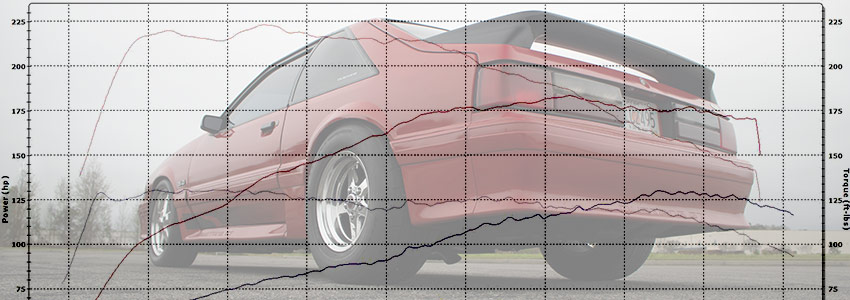
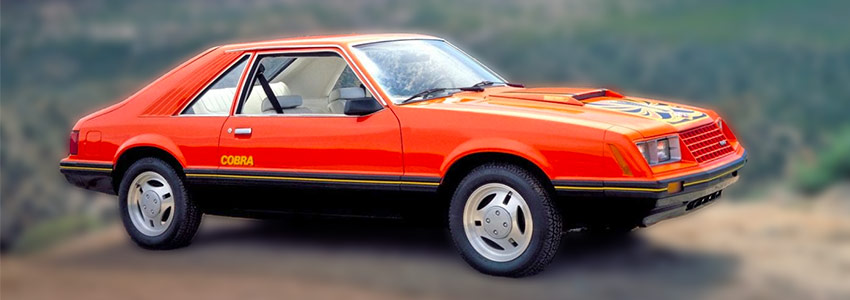
1979 Mustang Horsepower And The Windsor V-8

1980-1982: The "Lean Years" Mustang Horsepower And Torque
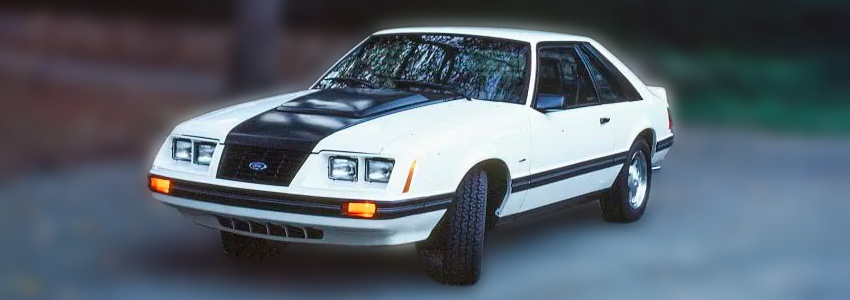
Fox Body Mustang And 5.0 HO Engine Are A Classic Combination
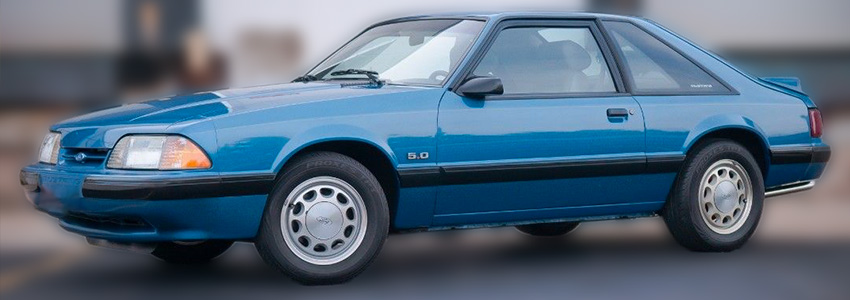
1989 Mustang Horsepower Beats Chevy Corvette
Mustang Horsepower With 6-Cylinder Engines
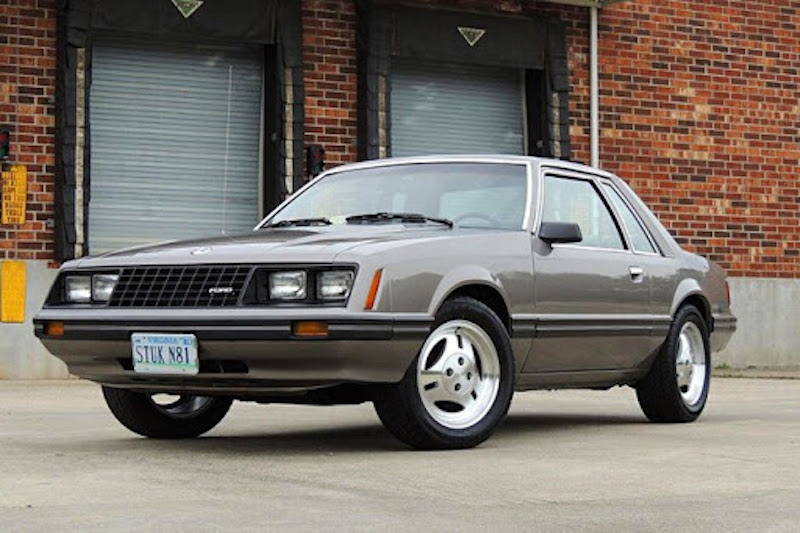

Fox Body 4-Cylinder Engines
1979-1993 Mustang Horsepower & Torque Ratings
Year
8-Cyl
HP
TQ
6-Cyl
HP
TQ
4-Cyl
HP
TQ
1979
5.0L 2V V8
140
250
2.8L V6
109
142
2.3L I-4
89
120
1979 cont.
3.3L I-6
85
143
2.3L Turbo
132
143
1980
4.2L 2V V8
119
194
3.3 I-6
85
143
2.3L I-4
89
120
1980 cont.
2.3L Turbo
132
143
1981
4.2L 2V V8
119
194
3.3 I-6
85
143
2.3L I-4
89
120
1982
4.2L 2V V8
119
194
3.3 I-6
85
143
2.3L I-4
89
120
1982 cont.
5.0L 2V HO V8
157
240
1983
5.0L 2V HO V8
175
245
3.8 V6
112
175
2.3L I-4
89
120
1983 cont.
2.3L Turbo
145
180
1984
5.0L 2V HO V8
175
245
3.8 V6
120
205
2.3L I-4
89
120
1984 cont.
2.3L Turbo
145
180
1984 cont.
2.3L Turbo SVO
175
210
1985
5.0L 2V HO V8
210
270
3.8 V6
120
205
2.3L I-4
89
120
1985 cont.
2.3L Turbo SVO
175
210
1986
5.0L 2V HO V8
200
285
3.8 V6
120
205
2.3L I-4
89
120
1986 cont.
2.3L Turbo SVO
205
248
1987
5.0L 2V HO V8
225
300
2.3L I-4
89
120
1988
5.0L 2V HO V8
225
300
2.3L I-4
89
120
1989
5.0L 2V HO V8
225
300
2.3L I-4
89
120
1990
5.0L 2V HO V8
225
300
2.3L I-4
89
120
1991
5.0L 2V HO V8
225
300
2.3L I-4
89
120
1992
5.0L 2V HO V8
205
275
2.3L I-4
89
120
1993
5.0L 2V HO V8
205
275
2.3L I-4
89
120
1993 cont.
5.0L 2V HO V8 (Cobra)
235
280
Related Articles




